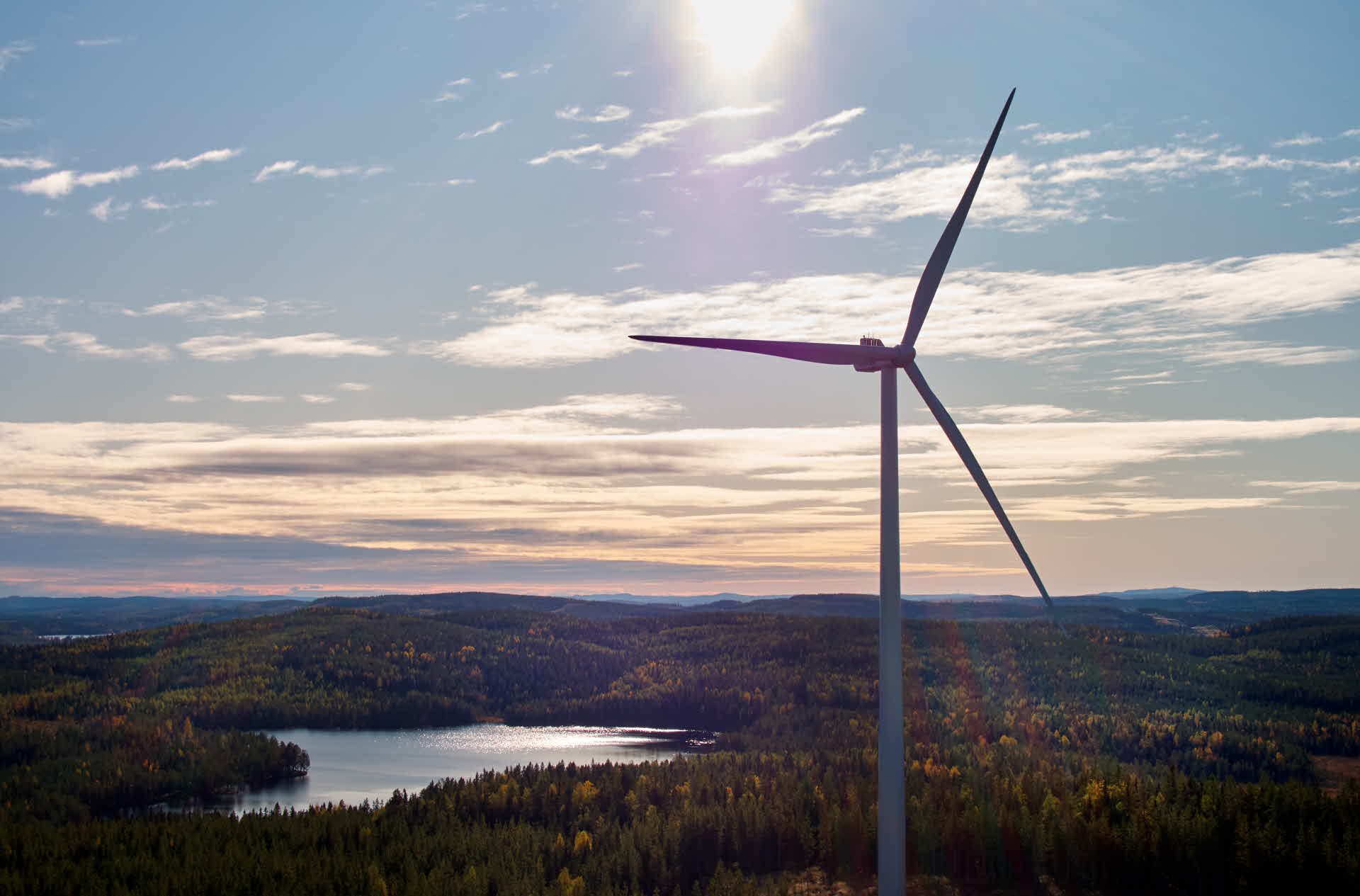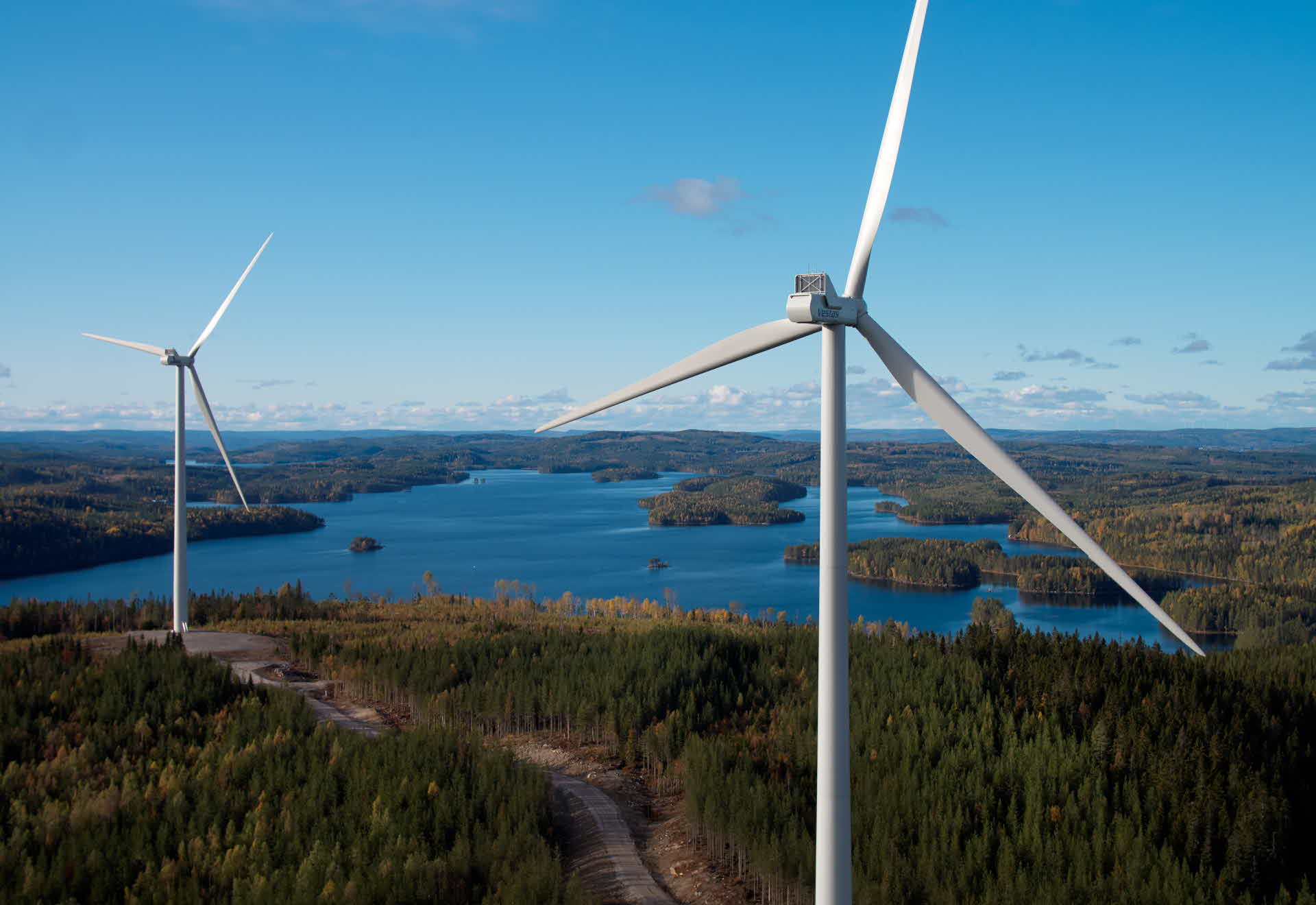
- RENEWABLE ENERGY
- WIND POWER
- FACTS ABOUT WIND POWER
Wind power and project development
Wind power is renewable and is one of the most environmentally friendly choices for extracting energy. A wind turbine of 6 MW in good wind conditions can produce approximately 18,000 MWh per year depending on the weather conditions. This equals the consumption of electricity of 900 electrically heated houses that have average electricity consumption of 20,000 KWh/year or the annual electricity consumption of 7,500 electric cars (estimated electricity consumption: approximately 2,400 kWh/year).
When the natural movement of air and gases becomes electricity
The air in our atmosphere moves due to differences in air pressure. This flow of air is called wind and it moves in different patterns such as in a vortex or laminar vertically. The greater the pressure differences, the more it blows.
The cause of the pressure differences is primarily that the solar radiation varies between different places on the earth's surface. Heated air is lighter than cold air and therefore the warm air rises. The wind passes the rotor blades (wings) of the wind turbines and causes them to rotate.
A generator, which is located on top of the wind turbine's tower, converts the rotation or mechanical energy into electrical power.
In most cases, a wind turbine produces electricity at a wind speed above 3 m/s and up to 25 m/s. In case of excessive wind forces, the power plant shuts down for safety reasons.
A modern wind turbine can use up to about 45% of the wind's energy, depending on the wind speed. The higher you go, the less turbulent the air will become. Turbines reach their best production efficiency in the zone with the most undisturbed air. Therefore, due to the technical development the turbines have become taller over the years and thus also the rotor blades are much longer today. Towers as high as 165 m have been developed and rotor blade lengths can be up to 83 m.
In Sweden, it is usually least windy during May - August and most windy during October - March*, when electricity demand peaks.
* Source SMHI
Development of wind power projects
Project development
The development of new wind power plants including an application for an environmental permit is a long process that can take up to 10 years.
Several different aspects are analyzed during the development phase e.g., an analysis of the impact of sounds and shadows, the impact on animals, humans and the environment, wind speed, possibilities for a grid connection or an optimal placement of the turbines. Before a project application can be submitted to the county administrative boards environmental assessment delegation, the relevant authorities and stakeholders need to be contacted, consultations with different stakeholders must have been taken place as well as an environmental impact assessment must be drawn up.
When the environmental permit has gained legal force, the process of detailed planning for the construction of the wind farm begins. In most cases the procurement phase ends with a Financial Close which is the point in time when financing for the project is secured.
Construction
During construction, SCA supports the project company with information and expertise to coordinate forestry and construction. The construction phase includes many stages such as geotechnical investigations, tree felling within the area, construction of the main infrastructure such as foundations, roads, cables, and crane plans before the assembly of the wind turbines can commence. After and often already during construction the turbines are connected to the grid to start producing electricity almost immediately.
Operation
When the construction is finalized, the park is handed over to the responsible asset management company representing the owner. A service company, often but not always the turbine manufacturer, manages the operation of the wind farm during its lifetime and carries out e.g. service and maintenance. SCA is in contact with all wind farms on SCA land to be able to coordinate forestry activities within the wind farm. In several wind farms SCA is also the responsible contractor for the maintenance of the road system and/or the snow plowing and contributes its expertise in consulting assignments.
More information is available at the homepage of Swedish Energy Agency - Energimyndigheten


